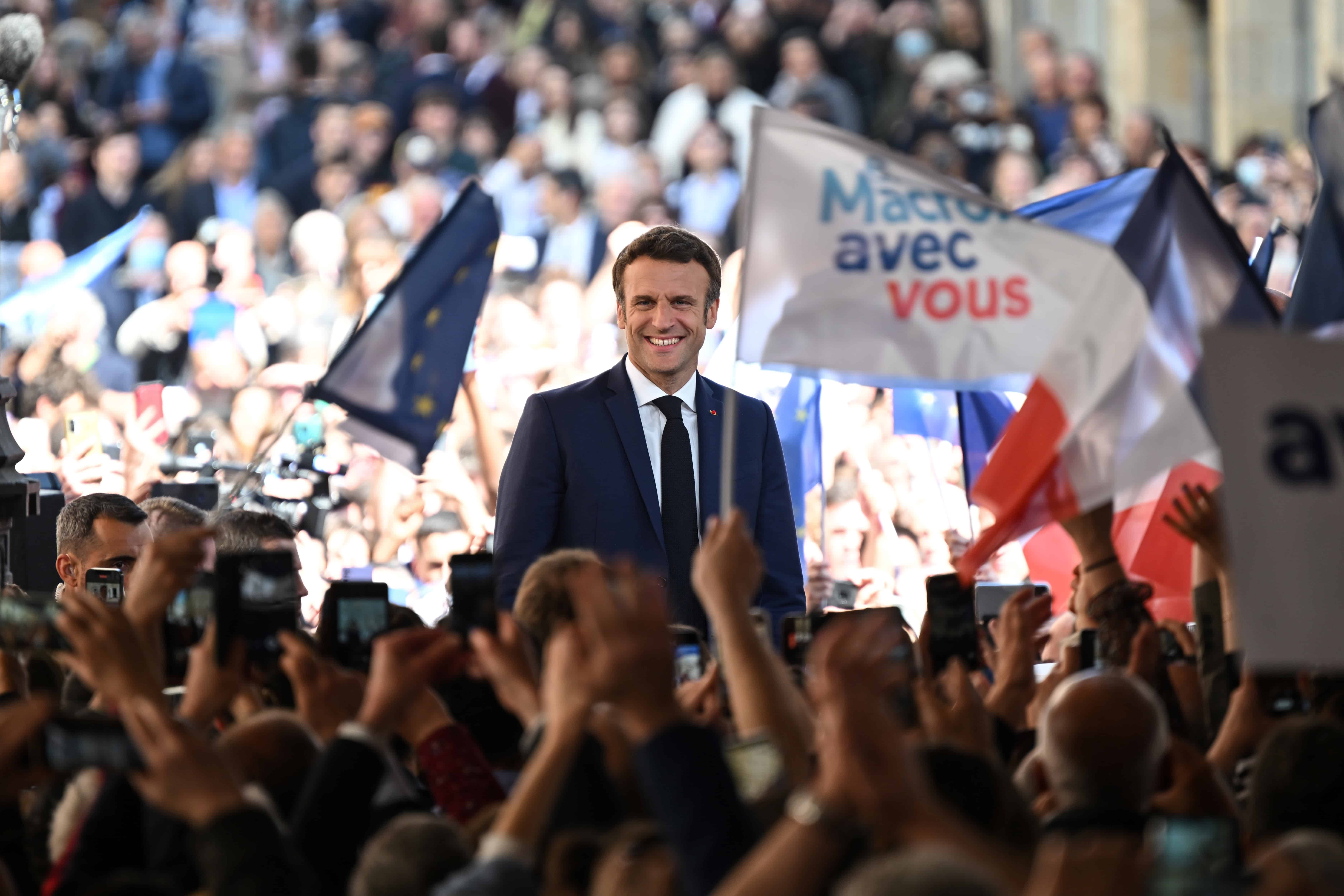Emmanuel Macron is hoping to become the first French leader since Jacques Chirac in 2002 to win a second term when voters go to the polls in the run-off round of the presidential election on Sunday.
The centrist ex-banker, who had never held elected office before becoming president in 2017, has weathered several crises that have left him greying at the temples.
Here’s a look at five defining moments of his presidency:
Youngest-ever president
Macron became the youngest president in French history at 39 when the former economy minister, a political novice, saw off far-right leader Marine Le Pen to win election on a promise to reform France and revitalize the EU, still reeling from Britain’s shock vote to leave the union.
A month later, his fledgling centrist On the Move party crushed the big parties that have dominated French politics for over half a century to win a large majority in the National Assembly.
Macron immediately set about implementing his program but quickly drew criticism for cutting taxes on financial investments in his first budget.
The left dismissed him as the “president of the rich” — a label he struggled to shake off for the next five years.
Bodyguard-gate
In July 2018, Macron, who had promised an “exemplary Republic”, was hit by scandal for the first time when it emerged that a senior member of his security team beat a demonstrator at a left-wing protest while posing as a policeman.
“Benallagate” caused major embarrassment for Macron after it was revealed that he knew about the beating, which was caught on camera, for weeks but let his former bodyguard Alexandre Benalla off with a slap on the wrist.
Yellow vests
In November 2018, Macron was caught off guard as a protest movement started by motorists angry over fuel tax hikes ballooned into a major revolt over his perceived arrogance and policies seen as weighted towards the urban elite.
Protesters wearing high-visibility yellow vests demonstrated each Saturday in Paris and other cities for nearly a year.
Many of the demonstrations ended in rioting and destruction of property, with a memorial to France’s war dead and stores on the Champs-Elysees among the targets.
Macron rushed through €10 billion in tax cuts and income top-ups and crisscrossed the country to address voters’ frustrations at a series of town hall debates that succeeded in taking the heat out of the protests.
Pensions row
In 2019, Macron embarked on his most ambitious reform to date, an overhaul of France’s pay-as-you-go pension system, one of the most generous in the world.
Macron argued that the French need to work longer to keep the debt-ridden system afloat and proposed to increase the minimum age for a full pension from 62 to 64.
He also wanted to scrap the 42 special regimes that give some workers more advantageous pension packages.
His plans sparked weeks of union-led protests, including a six-week rail strike. When the coronavirus pandemic hit, Macron put it on hold.
‘At war’ with Covid
In March 2020, Macron announced that France was “at war” with Covid-19 and placed the country under the first of three lockdowns to halt its spread.
The pandemic threw his reform agenda off course.
Over the next year and a half, he spent around €160 billion to save jobs and businesses, improve the health service and shore up the economy as part of what he called his “whatever it costs” approach.
The spending caused France’s public debt to balloon. At the end of 2021, it stood at €2.813 trillion.








